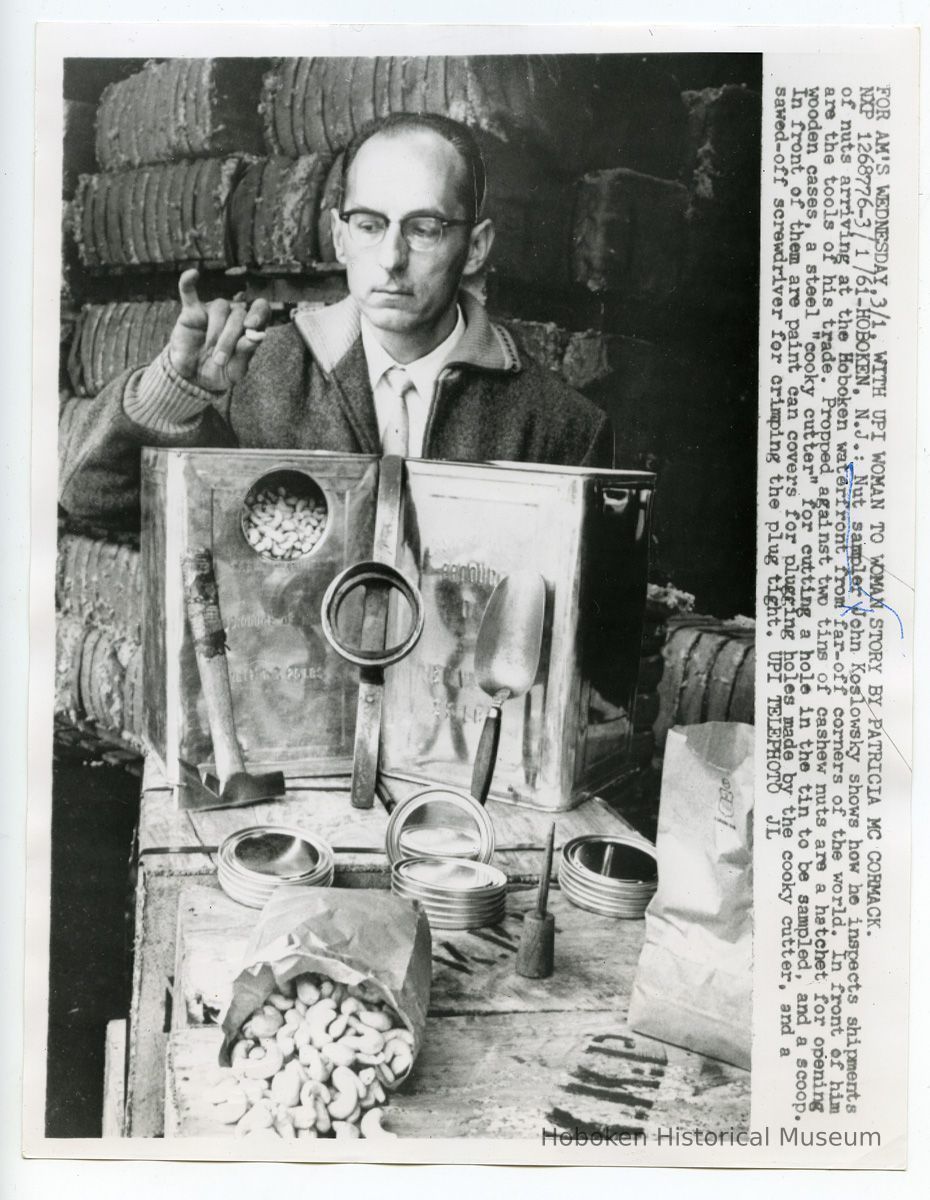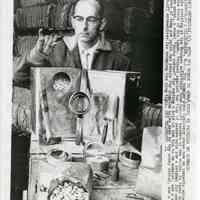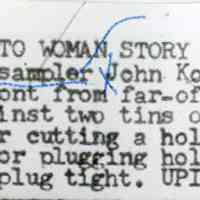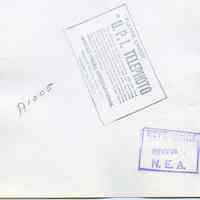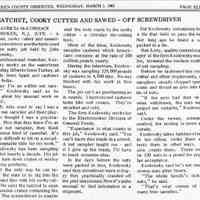Collections Item Detail
B+W photo of nut sampler John Koslowsky inspecting shipments at Pier C, Hoboken, March 1, 1961.
2014.001.0088
2014.001
Purchase
Purchase
Museum Collections.
United Press International (UPI)
1961
Hoboken
7 in
9 in
Notes: Article by Patricia McCormack as published in WARREN COUNTY OBSERVER. WEDNESDAY. MARCH 1, 1961, page 11 (note: published article in this newspaper did not include a photograph.) ==== A HATCHET, COOKY CUTTER AND SAWED - OFF SCREWDRIVER By PATRICIA McCORMACK HOBOKEN, N.J. (UPI) - A hatchet, cooky cutter and sawed-off screwdriver are the tools used in the nutty job held by John Koslowsky. A professional muncher, Koslowsky works on the waterfront sampling filberts from Turkey, almonds from Spain and cashews from India. "Say I'm an edible nut sampler," Koslowsky said as he went about his unusual work on Pier C. "My kids used to say I was a plain nut sampler and their playmates thought I was a psychiatrist. Now that they know I'm an edible nut sampler, they think I'm some kind of cannibal. It's really difficult to hit on a socially acceptable title for my work." Koslowsky has been sampling nuts for nearly a decade. His job is to turn down crates of wormy or damp products. And the only way he can inspect the nuts is to dig into the 65-pound tins with his cooky cutter. He uses the hatchet to open the wooden crates containing the tins. The screwdriver is used to seal the hole made by the cooky cutter - a circular tin-cutting tool. Most of the time, Koslowsky samples cashews which Americans consume at the rate of 100 million pounds yearly. During the interview, Koslowsky was sampling 225,000 pounds of cashews in 4,500 tins. He was finished with his work in five hours. The job isn't as good tasting as it sounds. Unprocessed cashews taste like soft cream. They're unsalted and cold. The firm Koslowsky works for is the Electricooker Division of General Foods. "Experience is what counts in this job," Kowlowsky said. "You can't learn this trade in a school. A nut sampler taught me - and if I give up the trade, I'll have to teach someone else." In the days before the nuts were packed in tins, Koslowsky said they sometimes were so buggy they practically crawled off the pier unassisted. Now it's quite unusual to find infestation in a shipment. But Koslowsky sometimes finds a tin that fails to pass the test. Not long ago he found a sari packed in a tin. Ben Lory, quality control manager of the firm Koslowsky works for, invented the modem method of nut sampling. Before he fashioned the cooky cutter and other implements, nut samplers simply chopped open a crate and thrust an arm into the tin of nuts. "If the arm had dust on it when withdrawn, the nuts were judged not suitable," Koslowsky said. Under the newer, scientific method, the testing is more accurate. Koslowsky takes batches of nuts to his office, cooks them and tests them in other ways. He also counts them. There must be 320 nuts to a pound for popular acceptance. Koslowsky said he's not one to chomp nuts after hours. "The whole family's sick of nuts," he said. "That's what comes of too many free samples." ==== ==== Original or Copy: Original Status: OK Status By: dw Status Date: 2014-03-02
